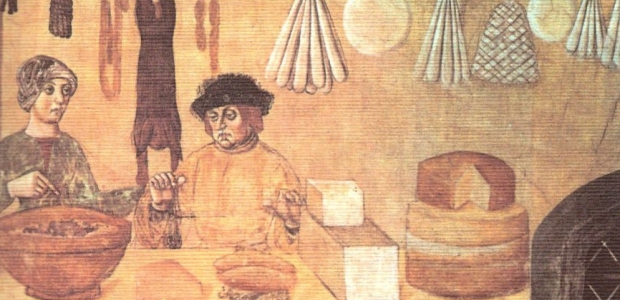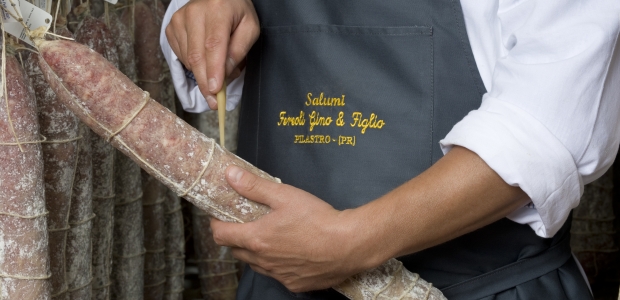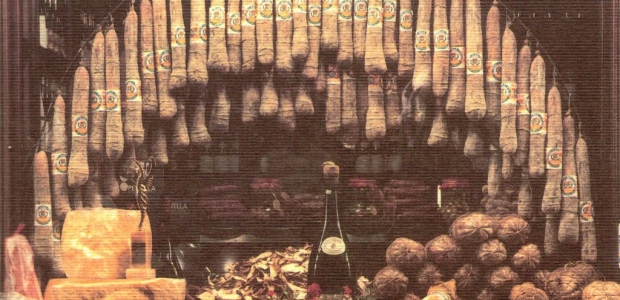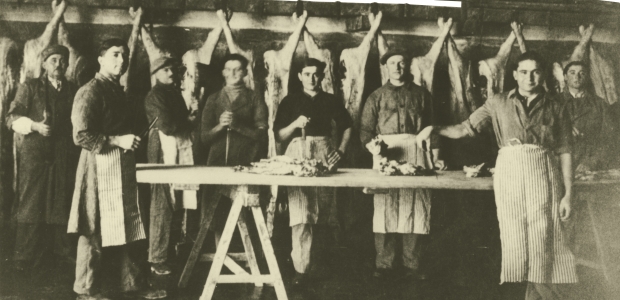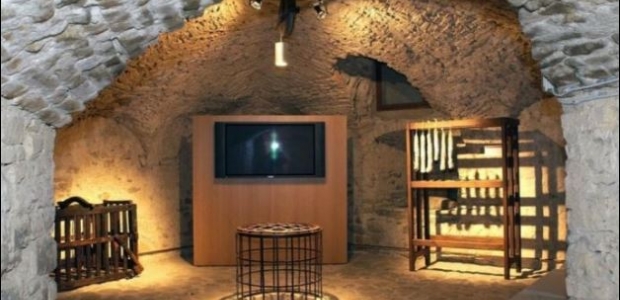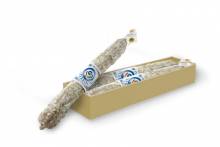Languages
The Marquis of salami
The Salame Felino: an aristocrat origin
"Voilà, je suis un Marquis d'un pays des saucissons" (Voilà, I am a Marquis of a country of salami). Francois Guillaume Leon Du Tillot uttered this phrase in 1711, at the time of his investiture as the Marquis of Felino taking possession of the castle and helping to legitimize a production that would become one of the most typical of the Parma. The history of the Salame Felino, however, started much earlier: in fact even going back to the Bronze Age have been discovered some bone fragments close to the “terramaricolo” village of Monte Leoni, on the hills that overlook the town. Furthermore it is dated 1436 the first document relating to Salami felinese. This document, found in Parma, has been written by Niccolo Piccinino and narrates an episode in which the Duke of Milan, who in the territory of the parmesan duchy had a detachment of his command, ordered his commander to get him "porchos viginti in carnibus pro sallamine”: in other words twenty pigs to make salami.
However its modern history passes, inevitably, through the Empress Maria Luigia that on February 28, 1822 gave her approval to the creation of a market where it was possible to “make good salami". In conclusion the salami story has long and solid roots.
The characteristics that make it an excellence are strict: it starts with the meat that must be of national origin: chilled but not frozen, and processed exclusively by companies of the province of Parma. The meat has to come from "heavy or mature pigs" (with an average weight of at least 130 kg), born in Italy and slaughtered in Emilia Romagna, Lombardy, Piedmont, Veneto and Tuscany. That’s because a particular nutrition of the pigs provides this magic meat: a necessary characteristic for the Salame Felino.
After that we pass at the creation’s steps: the first one is to process the meat through the meat mincer, adding spices (wine, pepper, sugar ...) and stuffing it in a natural pork casing. The second one starts when wise hands let the product dry hanging for some time, in wet conditions and controlled temperature. During the third one it’s necessary to move the salami to other environments where begins the final stage of maturation, of the average duration of twenty-five days.
The Salame Felino working techniques have remained unchanged over the past one hundred years, a part from the constraint related to the pig’s season slaughter: once in fact the pig was slaughtered only during the winter due to lack of meat pickling. Nowadays instead the meats are processed in factories throughout the entire year thanks to modern refrigeration systems that prevent decay.
The rules for the sausage’s labeling are also very rigid and reported on the official website of the Consortium, which guarantees the protection (http://www.salamefelino.com/consorzio/marchio-registrato/): "The Salame Felino IGP may be released for consumption: whole, with the label or with a seal; in a slice, vacuum packed or in a protected atmosphere. The name "Salame Felino", followed by the words "Protected Geographical Indication" or the acronym "IGP" (...), must appear on the label or seal in clear and indelible characters readily distinguishable from any other wording that appears on the same; has to be followed by the Community logo and the corporate brand. It is forbidden to add any qualification different from those provided for this specification, including the adjectives: type, taste, use, selected, chosen and the like”.
To protect, promote and enhance this typical product exists the "Consorzio di Tutela del Salame Felino IGP" based in Parma, at the Parma Union of Industrialists.
Currently thirteen companies participating in the Consortium, but others, belonging to the chain of meat processing such as farmers, slaughterers, producers and packers, have the opportunity to be part of it.
But as always when talking about the products of the Parma area, and in this case of the Felino Salami, the obliged issues of labeling or marking, are less important than the factors linked to the territory, the nature and the human component. The magic factor is “the genius loci”: an impalpable sensorial and concrete art, which is passed down through generations being the perfect combination of environment and man, raw materials and proven manufacturing techniques, which gives rise and continues to preserve something unique.
